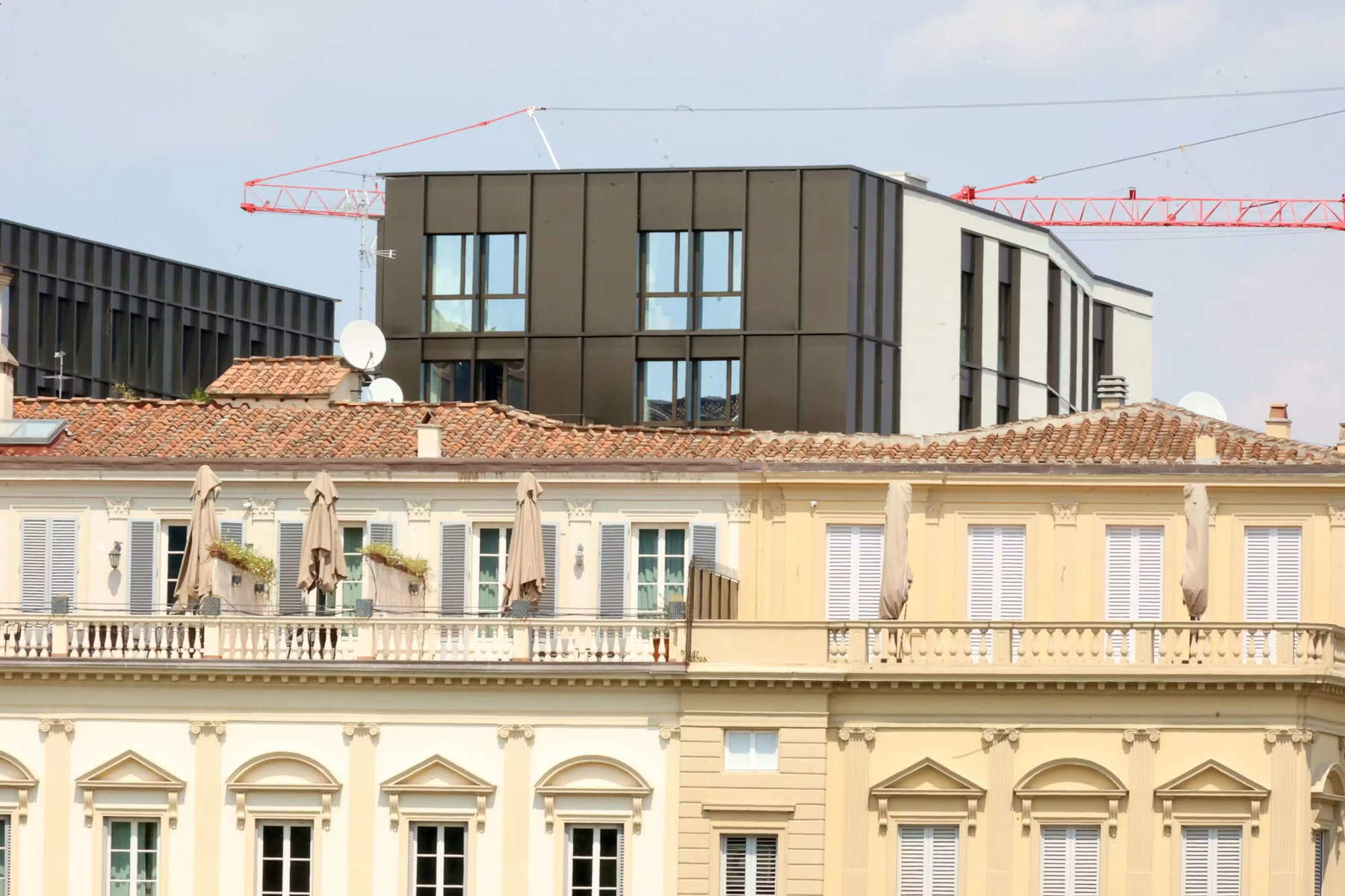In Florence , the building now known as the “black cube,” as the building that took the place of theformer Teatro Comunale (full story here) and whose profile stands out beyond the nineteenth-century buildings of Lungarno Vespucci, may be changing color. The “black” is actually a burnished brass, but certainly the effect the building makes in certain lighting conditions is that of a dark stain on the light colors of the previous buildings. Colors and materials, moreover, were given the green light by the Superintendent’s Office as early as 2020, and the property (Hines) let it be known that it had followed the palette that had been screened and then approved by the agency. The building’s design, Hines noted, was “prepared in compliance with the technical implementation notes and by selecting approved materials.”

The color and material prescriptions of the superintendence stated that “for the finishes of the elevations are to be understood as prescriptive: claddings with Santa Fiora stone, travertine, pietra serena; the use of plasters in the color scale from sand yellow to creamy white; the materials of the fixtures that may be in metal, with corten, brass and bronze finishes, and in wood for buildings subject to building renovation.” In the end, creamy white was chosen for the plasters, while for the finishes the choice of Hines went to burnished brass, which was present in the abacus of materials of the superintendence (which in addition to theburnished brass indicated, as material hypotheses, bush-hammered gilded Santa Fiora Toscana, Florence striped Santa Fiora Toscana, flamed pietra serena, striped pietra serena, Rapolano moka travertine, Rapolano brown travertine, Rapolano coffee travertine, Rapolano gray travertine, unpolished bronze, bronze with phosphorus, natural corten without oxidation, oxidized corten without waxing, theextralight brownishing burnished brass, light brownishing burnished brass, middle brownishing burnished brass, dark brownishing burnished brass, creamy white plaster, off-white plaster, light ivory plaster, and sandy yellow plaster.
In short, Hines would select materials and colors according to prescriptions, complete with approval. Now, however, the property says it is willing to change the coatings in order to reduce the impact of the cube on the profile of Lungarno Vespucci. For the time being, no solution is in sight yet, but a meeting between Hines, the municipality and the Superintendence is expected in the coming weeks to figure out if and how the black cube will be corrected.
 |
| Florence's "black cube" may now change color |
Warning: the translation into English of the original Italian article was created using automatic tools. We undertake to review all articles, but we do not guarantee the total absence of inaccuracies in the translation due to the program. You can find the original by clicking on the ITA button. If you find any mistake,please contact us.